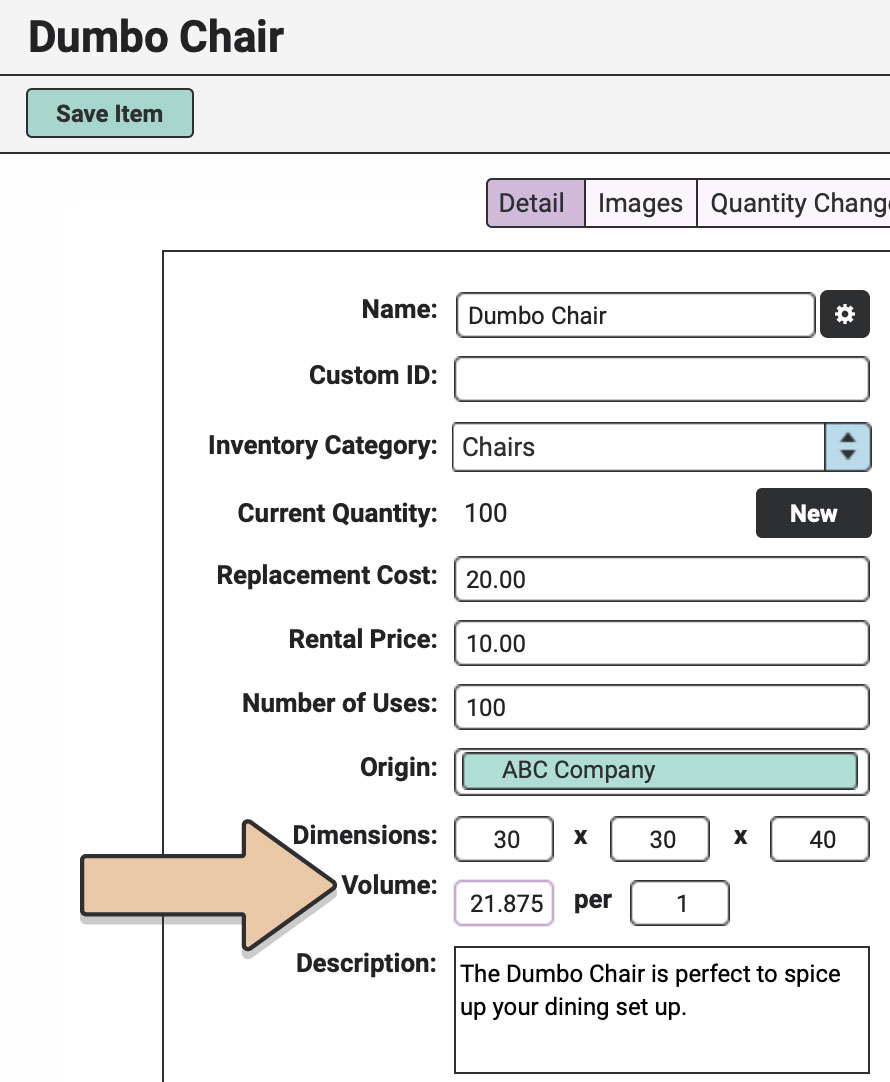Within RW, you can record the total amount of cubic space your Item takes up while being stored or transported in the Volume field.
Similar to Dimensions, when recording Volume you will need to make sure your measurements are consistent. Whether you use cubic feet, cubic meters, or cubic unicorns, it needs to remain consistent across all of your items.
But wait how do I get this magical number for Volume? There’s a simple equation that your High School Math Teacher will be excited to see you using.
Length x Height x Width = Volume (L x H x W = V)
Once you have this number you can put it in the Volume field. Make sure that the Volume you are using accounts for any packaging material, road cases, etc. You’ll want this volume to be the space the item takes up when being shipped or stored.
Now your Volume will read “X amount” per “1”.

This means that for every 1 of these items, it will take up X amount of space.
We’ll talk about items that are packaged together in just a sec, but for now, let’s talk about when you’ll find this Volume record useful.
Knowing the Volume of your items will help you schedule your deliveries and storage. If you know how much space your items will take up, you can estimate how much you can fit in your trucks or your warehouse.**
Some of your items travel alone (i.e. a couch might be wrapped in just a blanket or bubble wrap). But others may have their own road cases, crates, or boxes to protect them during moving. You’ll want to include the Volume of any cases or crates rather than just the item itself.
Also, the Volume may not necessarily equal L x W x H if the item is collapsible or comes apart when stored or transported. For example, if you have a table with removable legs or a bar that folds into itself. You will want to record the Volume of the items when they are in their stored or transported position.
Now here’s where it gets tricky…
You probably have some items that you package together, such as fine china or candlesticks. Let’s say, for example, you only ever always package your “Fancy Plates” in a crate of 25. However, if your client only rents 5 of the plates you still need to package them in the crate for safe travels. Therefore, whether you rent 5 or 25 plates, the crate is still the packaging they are delivered in.
Now, let’s say the Volume of your crate is 1 cubic foot per 25. If you rent 26 plates then RW will estimate that these 26 plates require 2 cubic feet of space because you will need 2 crates to transport these items.

The Volume field is useful especially for planning your deliveries. The Job Planning Report gives you the total Volume of each Order to help decide which trucks to load or how to split an Order into multiple trucks.
See also, Inventory Report, Performance Report, & Invoices Report for more about how Volume is displayed within RW Elephant.
**PLEASE NOTE: The Volume field will only be useful if you record the Volume of ALL your items. This is because if you only input the Volume for two of the three items on your Order, then RW will only include those two items when calculating the Volume of the entire Order.